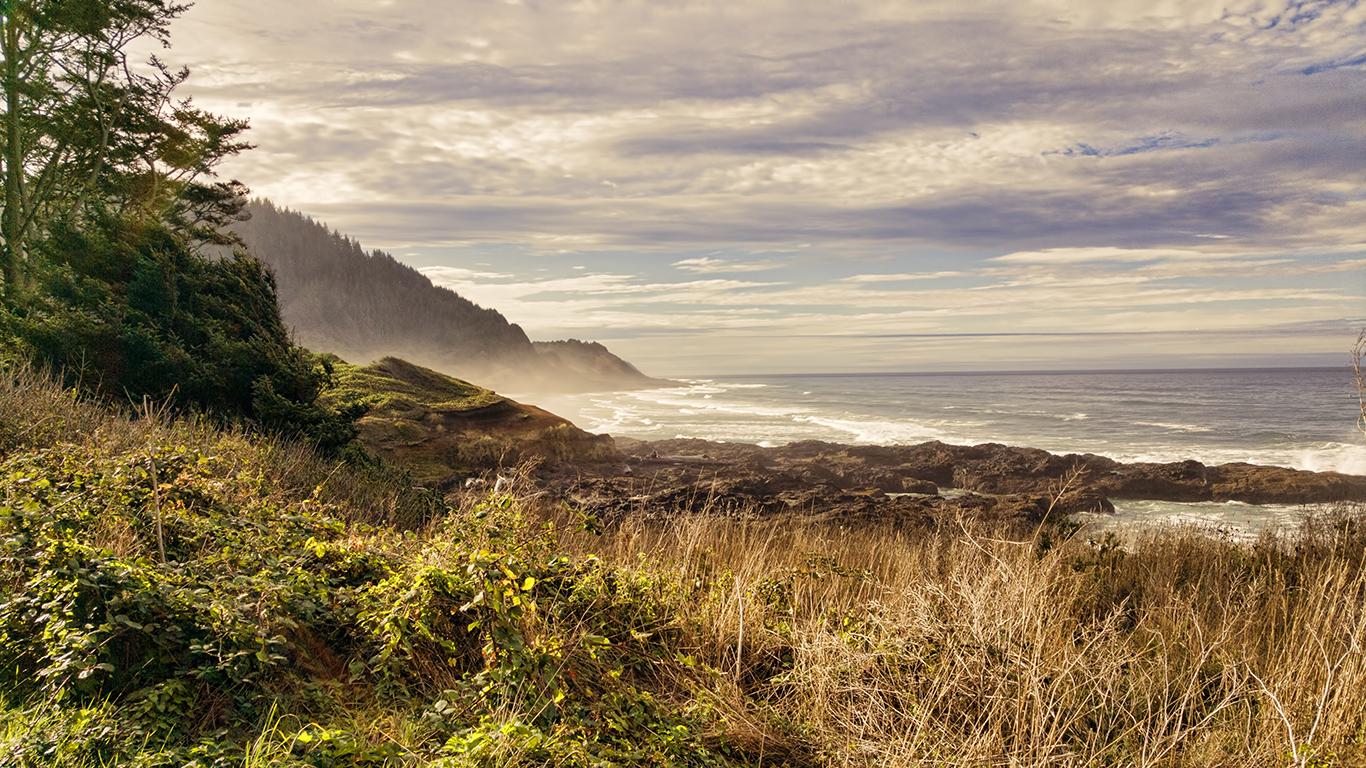It is critically important for us to come together and make decisions as a region about how we use our lands and our resources, as well as how we welcome our visitors.
The Oregon Coast Trail (OCT) is one of the best kept secrets in Oregon, including 362 miles of coastline and 28 coastal towns. It showcases the magic of Oregon, one of the most beautiful coastal vistas in the world. Walking it could be a story that you share with your grandchildren. But, in its current state, walking it would also entail a few less cheerful anecdotes.
In many spots the OCT follows the ocean, and involves walking on long stretches of sandy beach. In other areas, it includes the shoulder of Highway 101, or walking along city streets in coastal towns. There are places where it is difficult or impassible if you are there at the wrong time, when the tide is too high or when the rivers are running deep and full. But, with some time and energy, the experience of walking the OCT could be magical.
Improving the OCT would please hikers around the state and world. The continuing summer wildfire issues in southern and central Oregon have pushed some hikers away from the Pacific Crest Trail and created more of a demand for a through-hike on the coast. In true Oregon fashion, the need has already brought together a group of stakeholders, including the Oregon Parks and Recreation Department, Oregon Consensus, county commissioners, the Association of Oregon Counties, landowners, state legislators, the Oregon Coast Visitors Association, and numerous other stakeholders and agencies. This group is working collaboratively to figure out the best possible way to make the OCT safe and accessible, while preserving the wild and natural character of the coast.
Anyone who has ever built or tried to build a trail can tell you that it is a big job. Opinions vary widely about the location and value of a trail, as well as about the impacts of increased visitation and use. Many of the differences of opinion on these important topics exist at the hyper-local level. That’s why the stakeholder group identified a convener from each region. The OCT is divided into three regions: North, Central, and South Coast regions. The regional convener is a county commissioner from the area. I serve as the convener for the South Coast region.
Each region is broken into segments, and each segment has a team lead, as well as a team that is familiar with the area and is responsible for identifying a route through the area. In some cases, the segment teams identify a first and second choice for the route, depending on how much investment or difficulty is involved in completing a route.
All of this information about preferred trail alignments to address gaps in the OCT is nearly complete and is being documented in “Declarations of Cooperation” for each of the three Segment Teams of the OCT. My fellow Commissioners Doug Hunt from Lincoln County (Central Coast convener) and Erin Skaar from Tillamook County (North Coast convener) have been remarkable leaders in this work. The next step of our combined effort will involve a more detailed land use, cost feasibility, and project implementation analysis through a partnership with the Oregon Parks and Recreation Department (OPRD). Later this year, a “statewide landowner’s group” will be convened by Representative David Brock Smith and State Parks Commission member Dave Deur, who will help build consensus about long-term governance issues and multi-partner cooperative agreements that are needed to manage, improve, and maintain the trail into the future. Finally, the Oregon Legislature will continue to make immediate and ongoing decisions about the financial investments that are needed to improve the safety and quality of the OCT.
Projects like the OCT are big and complex, with lots of competing jurisdictions, regulations, and interests. None of us are going to complete projects of this size on our own, nor should we try to do so. We need all thoughts and ideas on the table, and we need to be open to all of the options, no matter how outside-the-box some of them may seem.
We are fortunate enough to live in one of the most beautiful places in the world. Climate change will increase the pressure on the coast to provide recreational opportunities for more international and domestic visitors, and the OCT is only a piece of that puzzle. It is critically important for us to come together and make decisions as a region about how we use our lands and our resources, as well as how we welcome our visitors. Through this sort of process, the OCT can fulfill its magical potential.
Contributed by: Coos County Commissioner Melissa Cribbins | South Coast Oregon Coast Trail (OCT) Segment Team Convener
